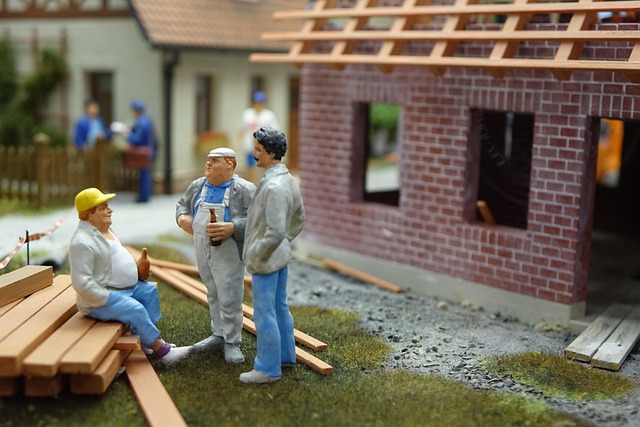The roofing industry's reliance on traditional materials like asphalt and concrete carries significant environmental impacts, including high carbon footprints and pollution. Eco-friendly roof solutions offer sustainable alternatives by utilizing locally sourced materials such as recycled metal, clay tiles, or plant-based composites, reducing transportation-related emissions and supporting local economies. These solutions minimize waste, enhance insulation and fire resistance, and promote biodiversity. Local sourcing reduces a project's carbon footprint, fosters community development, and encourages eco-friendly initiatives. To implement eco-friendly roof systems, assess local options tailored to regional climates, ensure structural integrity, engage professionals in sustainable construction, and consult local suppliers for optimal installation quality, longevity, and minimal transportation impacts.
In today’s eco-conscious world, minimizing our environmental footprint is paramount. One often overlooked area of impact is roofing—a critical component of any structure. This article explores the benefits of adopting eco-friendly roof solutions using locally sourced materials. From understanding the environmental cost of traditional roofing to uncovering sustainable alternatives like plant-based fibers and natural fabrics, we delve into how local sourcing reduces carbon footprints and fosters community development. Learn practical implementation tips for transitioning to greener roofing in both residential and commercial settings.
Understanding the Environmental Impact of Traditional Roofing Materials
The roofing industry has long relied on traditional materials like asphalt and concrete, which have significant environmental consequences. These materials contribute to a substantial carbon footprint due to their production processes, often involving fossil fuels and energy-intensive manufacturing techniques. Moreover, they create pollution and strain local ecosystems during extraction and transportation.
Traditional roofing also presents challenges in terms of waste management. Many conventional shingles end up in landfills, adding to the growing problem of non-biodegradable waste. This is where eco-friendly roof solutions step in, offering a sustainable alternative. By sourcing materials locally, such as recycled metal, clay tiles, or plant-based composites, we can reduce the carbon trail associated with transportation and support local economies.
The Benefits of Locally Sourced Eco-Friendly Roof Solutions
Using locally sourced materials for eco-friendly roof solutions offers a plethora of environmental benefits. By opting for locally produced roofing options, individuals and businesses can significantly reduce their carbon footprint. Transportation is a major contributor to greenhouse gas emissions, and by utilizing nearby resources, these emissions are cut down, leading to a healthier planet. This approach also promotes biodiversity as it reduces pressure on distant ecosystems.
Moreover, locally sourced eco-friendly roofs often have a lower environmental impact due to minimal processing and manufacturing. Traditional roofing materials require extensive production processes that consume significant energy and resources. In contrast, local suppliers can provide materials that are already adapted to the region’s climate, ensuring better performance and durability while minimizing waste and resource depletion.
Exploring Sustainable Alternatives: Plant-Based and Natural Fibers
Exploring Sustainable Alternatives: Plant-Based and Natural Fibers
In the quest for minimizing environmental impact, particularly in construction and roofing, there’s a growing interest in eco-friendly roof solutions. One promising avenue is the use of plant-based and natural fibers as alternatives to traditional materials. These fibers, derived from sustainable sources like bamboo, hemp, and jute, offer not only reduced carbon footprints but also enhanced insulation properties and better fire resistance. By harnessing these renewable resources, builders can create durable, aesthetically pleasing roofs that contribute positively to the planet’s health.
Moreover, plant-based fibers are versatile, allowing for innovative manufacturing processes that produce low-waste materials. This shift towards sustainable alternatives not only benefits the environment but also supports local economies by promoting the use of regional resources. As consumers and builders become increasingly conscious of their ecological footprint, embracing these eco-friendly roof solutions becomes a step towards a greener future, ensuring both sustainability and style in roofing projects.
How Local Sourcing Reduces Carbon Footprint and Promotes Community Development
Local sourcing of materials, especially for eco-friendly roof solutions, significantly reduces a project’s carbon footprint. By procuring resources from nearby suppliers, transportation distances are minimized, cutting down on fuel emissions and energy consumption associated with long-distance shipping. This simple shift can lead to substantial environmental benefits, aligning with the global push for sustainability.
Moreover, local sourcing promotes community development by strengthening local economies and fostering partnerships. It encourages job creation within communities, ensuring skilled workers and promoting a sense of ownership among residents. This collective effort not only builds resilient local infrastructure but also creates a positive feedback loop where eco-friendly initiatives thrive due to the support and engagement of the surrounding population.
Implementation Tips for Adopting Eco-Friendly Roof Systems in Residential and Commercial Spaces
Implementing eco-friendly roof systems is an excellent way to reduce a building’s environmental footprint and contribute to sustainable practices. When adopting these solutions, whether in residential or commercial spaces, several practical tips can guide the process. Firstly, assess the local climate and architectural design to choose appropriate materials; different regions offer unique, locally sourced options that are better suited for specific weather conditions. For instance, in areas with frequent rainfall, water-efficient systems like green roofs or eco-friendly membranes could be ideal.
Additionally, consider the structural integrity of the building before installation. Eco-friendly roof solutions can vary from lightweight vegetation to heavy solar panels, so ensuring the structure can support these additions is vital. Engaging with professionals experienced in sustainable construction and consulting with local suppliers for readily available, environmentally friendly materials are key steps. This approach not only minimizes transportation impacts but also ensures high-quality, long-lasting installations.
Adopting locally sourced materials for roofing offers a compelling path towards minimizing environmental impact. By switching to eco-friendly roof solutions, we not only reduce carbon footprints but also foster community development and preserve natural landscapes. Plant-based and natural fibers provide sustainable alternatives that are both durable and aesthetically pleasing. With proper implementation, these innovative eco-friendly roof solutions can transform our buildings into harmonious components of a greener future.
